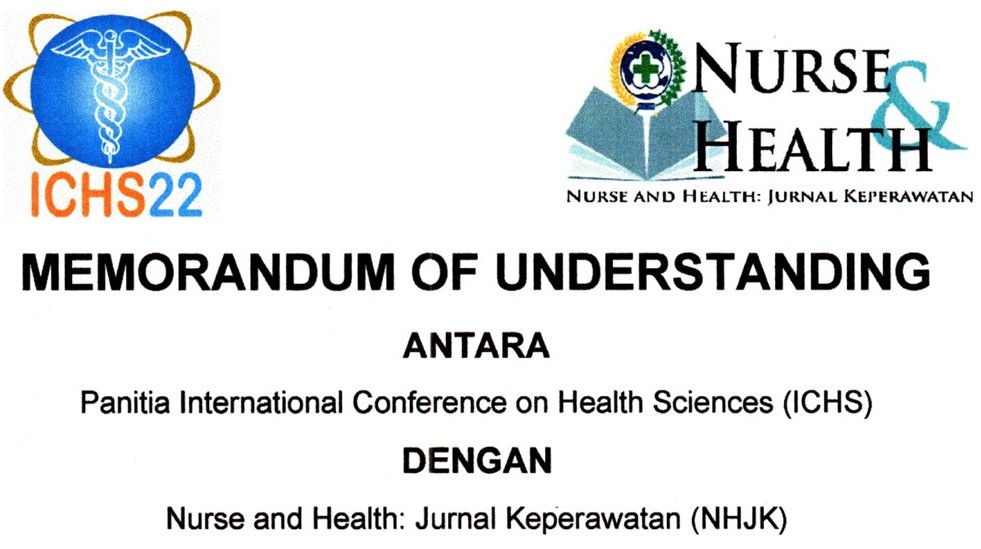THE EFFECTIVENESS OF INTRADIALYSIS STATIC BIKE EXERCISE TOWARD FUNCTIONAL CAPACITY IN HEMODIALYSIS PATIENTS
Abstract
Background: Patients with terminal renal failure require renal replacement therapy in the form of hemodialysis. Although already have hemodialysis therapy, there is still buildup of metabolic waste in patients’ body that results in a decrease in functional capacity. Decreased functional capacity in hemodialysis patients causes limitations in carrying out physical activities that reduces their quality of life. However, intradialysis physical exercise by using static bike can be a therapy to increase patients’ functional capacity.Objective: This study was aimed to determine the effectiveness of static bike exercise toward functional capacity in hemodialysis patients.Method: This research is a quantitative study with a quasi-experimental method using pre and post approach with control group design. Intervention and control groups were included in this study. There were 20 people in each group that were selected through consecutive sampling technique as samples of this study. The study was carried out in the hemodialysis room of RSUP Dr. M. Djamil, Padang.Result: The analysis was done using Paired T-Test with a degree of confidence of 95% and showed that intradialysis static bike exercise effectively increased the functional capacity in hemodialysis patients (p = 0.001).Conclusion: Intradialysis static bike exercise can be used as a nursing intervention to increase the functional capacity in hemodialysis patients. Key words: Hemodialysis, exercise, functional capacity.Downloads
References
Barril, G., Nogueira, A., Alvarez, G., & Sanhez-Tomero, J.A. (2018). Evaluation of functional capacity through the 6 minutes walking test (6MWT) in patients with CKD. Ann Nutr Disord & Ther, 5(1), 1053.
Jha, V., Garcia-Garcia, G., Iseki, K., Li, Z., Plattner, B., Saran, R., Wang, A. Y., & Yang, C. W. (2013). Chronic kidney disease: global dimension and perspective. Lancet, 20(382), 260 – 272.
Jung, T.D, & Park, S.H. (2011). Intradialytic exercise programs for hemodialysis patients. Chonnam Med J, 47(2), 61-65.
O’Callaghan, Chris. (2009). At a glance sistem ginjal. Jakarta: Penerbit Erlangga.
Malagoni, A.M., et all. (2008). Acute and long-term effects of an exercise program for dialysis patients prescribed in hospital and performed at home. Journal of Nephrology, 21(6), 871-878.
Maja, B., Cuk, I., & Bojan, L. (2016). Six-minute walk test in renal failure patients: Representative result, performance analysis and perceived fatique predictors. Plos One. Doi: 10.1371/journal.pone.0150414
Makhlough, A., Ilali, E., Mohseni, R., & Shahmohammadi, S. (2012). Effect of intradialytic aerobic exercise on serum electrolytes levels in hemodialysis patients. Iranian Journal of Kidney Disease, 6(2), 119-123.
Parsons, T.K., Tosselmire, E.D., King-VanVlack, C.E. (2006). Exercise training during hemodialysis improves dyalisis efficacy and physical performance. Exercise Arch Phys Med Rehabil, 87, 680-687.
Parsons, T.L., Tosselmire, E.D., King-VanVlack, C.E. (2004). The effect of an exercise program during hemodialysis on dialysis efficacy, blood pressure and quality of life in end stage renal disease (ESRD) patients. Clinical Nephrology, 61(4), 261-274
Pollentier, B. & Irons, S. (2012). Examination of the six-minute walk test to determine functional capacity in people with chronic kidney disease. Kidney Inter Suppl. 2, 279-334. Doi: 10.1038/kisup.2012.40
Sukandar, Enday. (2013). Nefrologi klinik. Bandung: Pusat Informasi Ilmiah.
Authors who publish with Nurse and Health: Jurnal Keperawatan agree to the following terms:
- Authors retain copyright licensed under a Creative Commons Attribution-NonCommercial 4.0 (CC BY-NC 4.0), which allows others to remix, tweak, and build upon the authors' work non-commercially, and although the others' new works must also acknowledge the authors and be non-commercial, they don't have to license their derivative works on the same terms.
- Authors are permitted and encouraged to post their work online (e.g., in institutional repositories or on their website) prior to and during the submission process, as it can lead to productive exchanges, as well as earlier and greater citation of published work (See The Effect of Open Access). Authors can archive pre-print and post-print or publisher's version/PDF.








_resize1.jpg)















